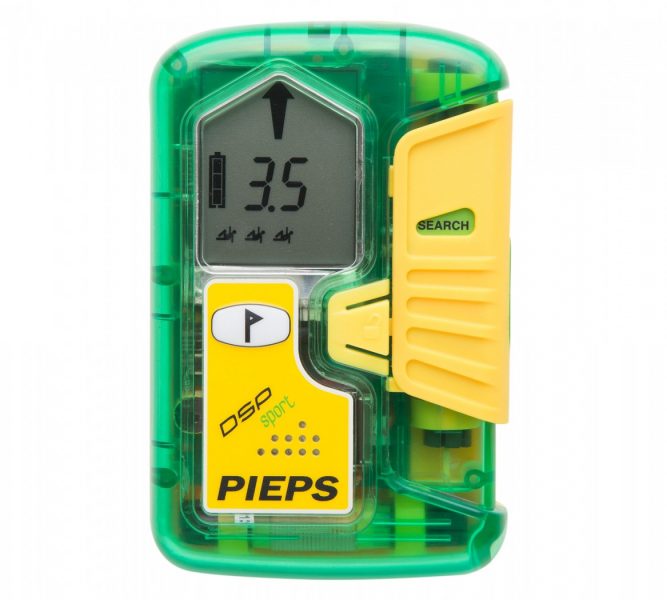
There have been two major avalanche incidents involving the Pieps DSP Pro and DSP Sport beacons, prompting spreading demands that Black Diamond/Pieps issue a recall.
Update 10/22/20 Yesterday, Pieps issued the following Instagram statement:
We know that confidence in your equipment is key. If you have any concerns about your DSP Pro/Sport, please contact us. We will offer you an upgrade to the latest generation of our avalanche transceivers. Contact us at dsp@pieps.com
Update 10/21/20 Since first publishing this piece on 10/20/20, we have received word there is a class action lawsuit. We have not confirmed this with Pieps, Black Diamond or over arching Clarus Corporation.
If you’ve spent any time on Instagram or Facebook over the past week, you’ve likely caught wind of an issue with Pieps DSP Pro and DSP Sport beacons. The warning call was first sounded by Christina “Lusti” Lustenberger via Instagram and has since snowballed into a chorus of recall demands from professional athletes and recreational skiers alike.
To summarize, Lusti and her ski partners Nick McNutt and Ian McIntosh were on set for the new TGR film “Make Believe.” They started the day with routine beacon checks, went on to ski some sweet spines and then opted for an end of the day pillow run. As Nick started down the run, he kicked off a massive pillow that funneled into his exit, thereby sweeping him into several trees before burying him. (Video below). His crew rushed to his aide but couldn’t get a signal from his beacon. A lucky probe strike got them digging in the right spot, and they were able clear his airway just after five minutes. Once he’d been rescued, they discovered his beacon was switched off.
Among the reasons this could have happened is a potential fault in the Pieps DSP on/off switch. While there is a lock mechanism intended to keep the switch in position, anecdotal reports claim the switch is faulty. Lusti and her team believe that its possible the beacon switch (which was secured in a chest harness) got bumped when Nick was getting raked through the trees.
After the incident, Lusti reached out to her network of skiers and found others who had experienced similar issues. The team also reached out to Pieps about the issue, who asked that Nick send the beacon in for testing. Somewhere in transit, (perhaps due to Covid, this occurred last spring), the beacon got lost. Nick gathered other DSP Pro and Sport beacons to send for testing.
Lusti’s Instagram posts have gone viral, as have widespread demands that Pieps issue a beacon recall. It also prompted a post by Bri Howard whose husband, Corey Lynam, was killed in an avalanche near Whistler in 2017. He was wearing a Pieps DSP beacon which had apparently switched modes at some point during the avalanche. This was a more high profile incident involving a police report and the beacon in question was sent to a third party tester in Europe. It was cleared and deemed functionally sound.
We reached out to Pieps yesterday and they said they will issue a statement in coming days. So far, the brand is standing by the functional integrity of the beacons and that they have met all industry standards throughout the course of thorough, long term testing. Pieps released the following statement in an Instagram post six days ago that says as much and includes a tutorial on how to check the condition of the beacons:
“We have received inquiries about the design and safety of the Pieps DSP Sport and DSP Pro avalanche beacons.
These beacons have undergone vigorous testing and exceed all certification standards. They have been sold globally since 2014 and used by countless backcountry travellers ever since.
A beacon is a personal safety tool which must be properly used and maintained. Any misuse may compromise its functionality. Please refer to the video on the fourth slide for how to inspect your beacon.
Your safety in the backcountry is our top priority. Please reach out to Black Diamond Equipment in North America and Pieps in Europe if you need further information or if you are unsure how to verify the condition of your beacon.”
So what should we make of this?
The possible potential for switch malfunction is an issue we’ve alluded to in a few other articles on this site including Louie’s Black Diamond Recon BT review and Lou’s comparison of several beacons in his article How Your Beacon Can Kill. Are there elements of user error causing the beacons to fail? If the beacons have met industry safety standards, does that then mean there’s an issue with the standards themselves?
We will continue to update this article as more information comes in. Lou is also working on some of his own tests, which we will publish results on once we have something definitive.
For clarity, this issue has been observed in the older DSP Pro and current DSP Sport models which have been in the global retail market since 2014. Pieps is a sister company of Black Diamond.
Manasseh Franklin is a writer, editor and big fan of walking uphill. She has an MFA in creative nonfiction and environment and natural resources from the University of Wyoming and especially enjoys writing about glaciers. Find her other work in Alpinist, Adventure Journal, Rock and Ice, Aspen Sojourner, AFAR, Trail Runner and Western Confluence.
